Expanded offering of virtual and hybrid education
To meet the increasing demand for lower-cost and more flexible options, institutions are partnering with educational technology companies like 2U and Evidence in Motion (EIM) to offer advanced degrees in pharmacy, nursing, physical therapy, and many more in virtual formats.
In June 2020, the St. John Fisher College Wegmans School of Nursing announced its offering of an online Master of Science in Nursing degree in partnership with 2U, Inc.
Read Article
In March 2021, Purdue announced its partnership with Evidence In Motion to offer new innovative health care certifications with an expected online completion time of six to nine months.
Read Article
In June 2021, the University of North Carolina’s Gillings School of Global Public Health announced its partnership with 2U to offer the school’s MPH degree in a virtual format.
Read Article

Top 5 Higher Ed Trends to Watch In 2022
Alejandra Zertuche, Founder, CEO Enflux
While we admittedly don’t have a crystal ball, we at Enflux have a solid pulse on Higher Ed. These are the Top 5 Higher Ed Trends to Watch in 2022, with some additional reading links. Enjoy, and we look forward to being part of your successful 2022.
Cost and accessibility take center stage for higher education. In an attempt to attract students and compete with virtual learning, many schools plan to discount tuition.
A study conducted by National Association of College and University Business Officers found that the average discount rate reached 48.1%, an approximately 3% point increase from last year. This is a response from the institutions that are looking for ways to attract and retain students amid the pandemic.
Read Article
Southern New Hampshire University announced last year that starting in 2021 their tuition would be discounted by more than 50%.
Read Article
Diversity, Equity, and Inclusion (DEI) on the rise in higher education
DEI has taken the Western Hemisphere by storm over the past 2 years, creating a surge of public policy and social pressure on corporations, federal agencies, and institutions of higher education. As accrediting bodies wrestle with setting standards to best measure DEI, many institutions are struggling to realign their approach and course offerings.
The common trends on how institutions are addressing DEI:
- Talent Acquisitions Demographic Spread
- Unconscious Bias Training
- Instituting DEI Leaders and Education Resource Groups (ERGs)
Continued growth of digital and personalized experiences
The demand for educational technology (EdTech), intended to enhance teaching and support learning, is projecting steady growth in the coming years. This movement has allowed for massive amounts of data collection. Thus, providing opportunities for greater use of Predictive Analytics, Machine Learning, and AI.
The one-size-fits-all approach to education has been continually challenged and is no longer acceptable. Innovative technology enables a more tailored learning experience and provides more robust student engagement and higher probabilities of success.
Read Article
Standardized test scores are no longer a requirement for admission
Due to the pandemic, some institutions waived the requirements of SAT or ACT scores in admissions. It is likely this trend will continue past the pandemic.
For instance, in Nov 2021 Pharmacy.org reported about 80% of pharmacy schools are not requiring PCAT while 20% made an exception for the 2022 academic year.
Read Article